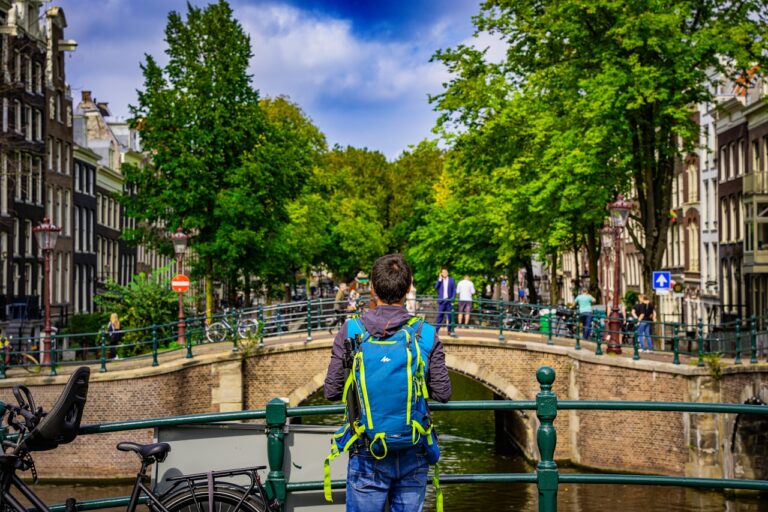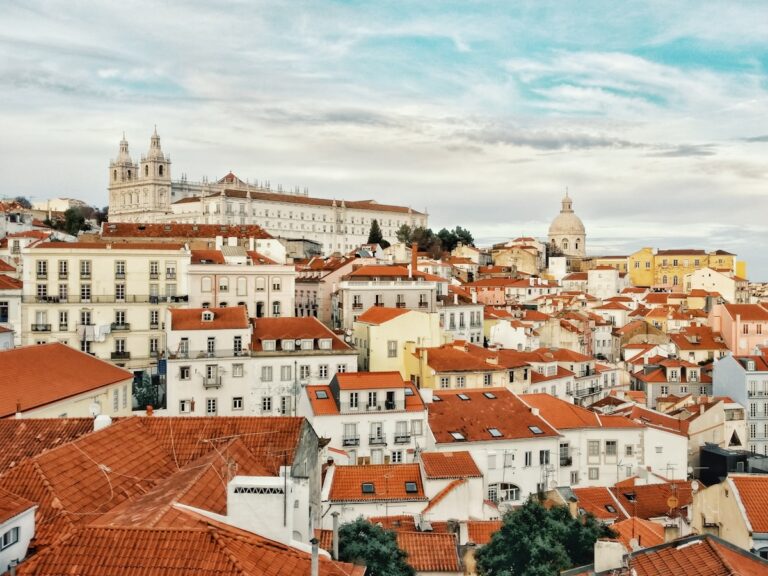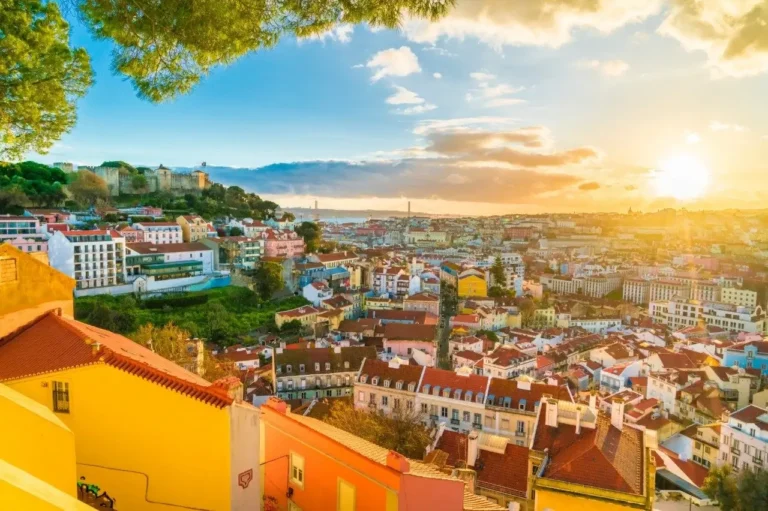The Best Ways To Get Around In Madrid
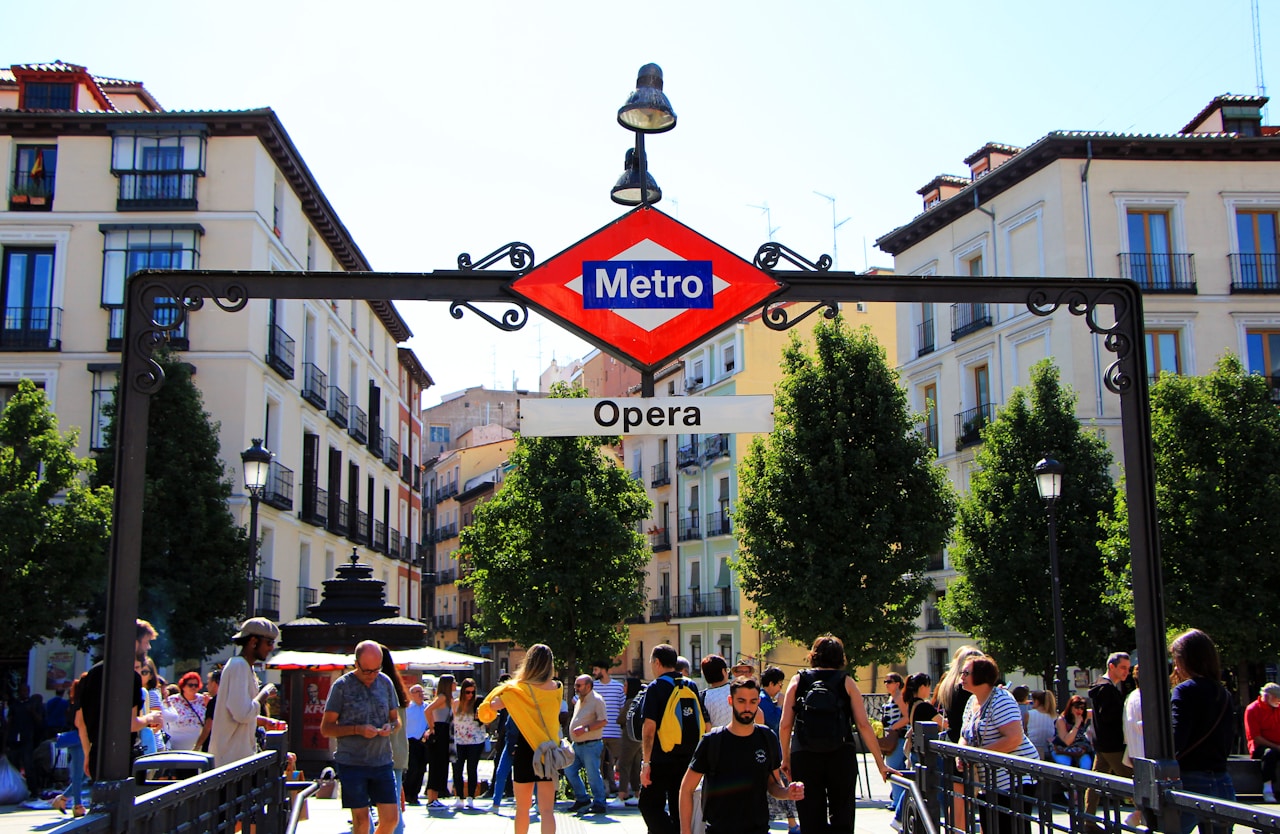
Your Essential Guide to Getting Around Madrid – Madrid’s transportation network dazzles visitors with its efficiency and variety.
- Understanding Transport Network in Madrid
- Arriving and Departing in Madrid: Navigating the Airport and Trains
- Exploring Madrid by Public Transportation
- Taking a Tour Bus or Sightseeing Option Around Madrid
- Walking and Cycling in Madrid
- Taxis, Rideshares, and Car Rentals in Madrid
- Tips for Smooth Travel and Navigation When Traveling to Madrid
- Wrapping Up
The metro whisks travelers between iconic landmarks while city buses wind through charming neighborhoods, offering glimpses of local life along the way.
Savvy tourists grab a Madrid Tourist Travel Pass for unlimited rides, making exploration a breeze!
Biking along dedicated paths or strolling through the historic center reveals hidden plazas and tucked-away tapas bars that vehicle-bound travelers often miss.
But which option delivers the best Madrid experience?
Highlights
Hide- Madrid's metro system is fast and efficient, serving as the best option for quickly traversing the city, especially during peak tourist seasons.
- The Tourist Travel Pass offers unlimited access to Madrid's entire public transportation network for 1-7 days, providing excellent value.
- City buses provide scenic routes with clear color coding, ideal for sightseeing while traveling between Madrid's major attractions.
- Walking is perfect for exploring Madrid's compact historic center with its pedestrian-friendly zones and closely situated landmarks.
- Taxis and rideshare apps offer convenient transportation without language barriers, with standard city trips costing approximately €15-20.
Understanding Transport Network in Madrid
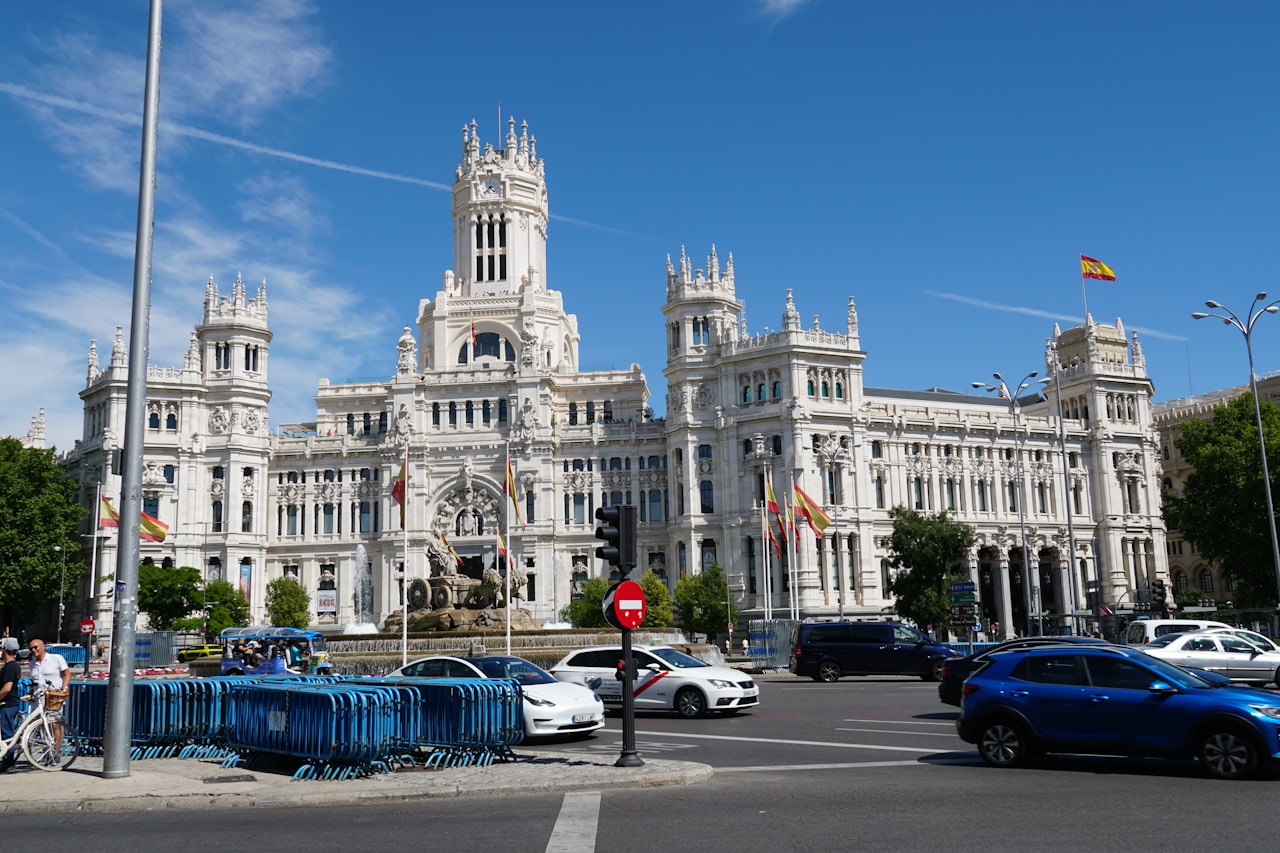
Madrid’s public transportation system offers visitors multiple efficient ways to explore the city’s magnificent attractions, from the reliable Metro to extensive bus routes that reach every corner of the Spanish capital.
Tourists can maximize their sightseeing with the Madrid City Pass, which bundles transportation with entry to popular landmarks like the Prado Museum and Royal Palace.
Savvy travelers might also consider single-ride tickets, 10-journey passes, or the Tourist Travel Pass, each providing different advantages depending on your itinerary and length of stay!
How To Get Around Madrid Efficiently
Madrid boasts an extensive public transportation network, featuring a world-class metro system, thorough bus routes, and convenient cercanías (commuter trains) that connect tourists effortlessly to every corner of the city.
The Spanish capital follows a relatively straightforward layout, with Gran Vía and Paseo del Prado serving as major arterial roads, while charming, narrower streets characterize historic neighborhoods like La Latina and Malasaña.
Understanding this efficient grid system, punctuated by stunning plazas and green spaces, helps visitors navigate between Madrid’s iconic attractions with confidence!
Key forms of Madrid Public Transport for tourists
Maneuvering the sprawling Spanish capital becomes a breeze once you understand the extensive public transport network that connects every corner of this lively metropolis.
Madrid’s public transportation system offers tourists unparalleled freedom with the convenient Madrid Tourist Pass, giving unlimited access to Madrid metro tickets and the entire network.
| Transport Option | Benefits | Best For |
|---|---|---|
| Metro | Fast, frequent, clean | Crossing town quickly |
| City Buses | Scenic routes, street-level views | Enjoying the cityscape |
| Cercanías Trains | Reaches suburbs, fewer stops | Day trips beyond city limits |
Overview of Madrid Streets and general layout
At the heart of Spain’s lively capital lies a distinctive grid system that makes traversing the city surprisingly intuitive.
Madrid streets radiate from central plazas like Puerta del Sol, creating a wheel-like layout that’s easy to navigate.
Learning how to get around Madrid means understanding this structure—major avenues slice through neighborhoods, while colorful side streets invite spontaneous exploration of Spain’s dynamic urban tapestry!
Madrid City Pass and Other Options
Madrid offers two main visitor card options, each catering to different travel styles and priorities: the exhaustive Madrid Card, which includes museum access, and the transport-focused Madrid Tourist Pass.
Travelers looking to maximize their budget while minimizing wait times can benefit greatly from investing in one of these city passes.
The right choice depends on your itinerary—art enthusiasts should lean toward the Madrid Card, while those planning to zip between neighborhoods might find the Tourist Pass perfectly adequate!
Madrid Card vs. Madrid Tourist Pass: Which suits you?
When deciding between tourist passes in Spain’s lively capital, travelers often face the dilemma: Madrid Card or Madrid Tourist Pass?
The Madrid Card offers museum access with transport options, ideal for culture enthusiasts.
Meanwhile, the Madrid Tourist Pass focuses primarily on unlimited transit across zones.
Your choice depends on priorities—art exploration or extensive city movement with budget-friendly transportation.
Saving money and skipping lines with city passes
Beyond individual tickets and standard passes, savvy travelers can maximize their Madrid experience through specialized city passes designed to save both time and money.
The Madrid City Pass bundles attraction tickets with public transport in Madrid, letting you breeze past long queues while exploring the city.
Compare options beforehand—some passes focus on museums, while others prioritize extensive public transport tickets coverage!
Arriving and Departing in Madrid: Navigating the Airport and Trains
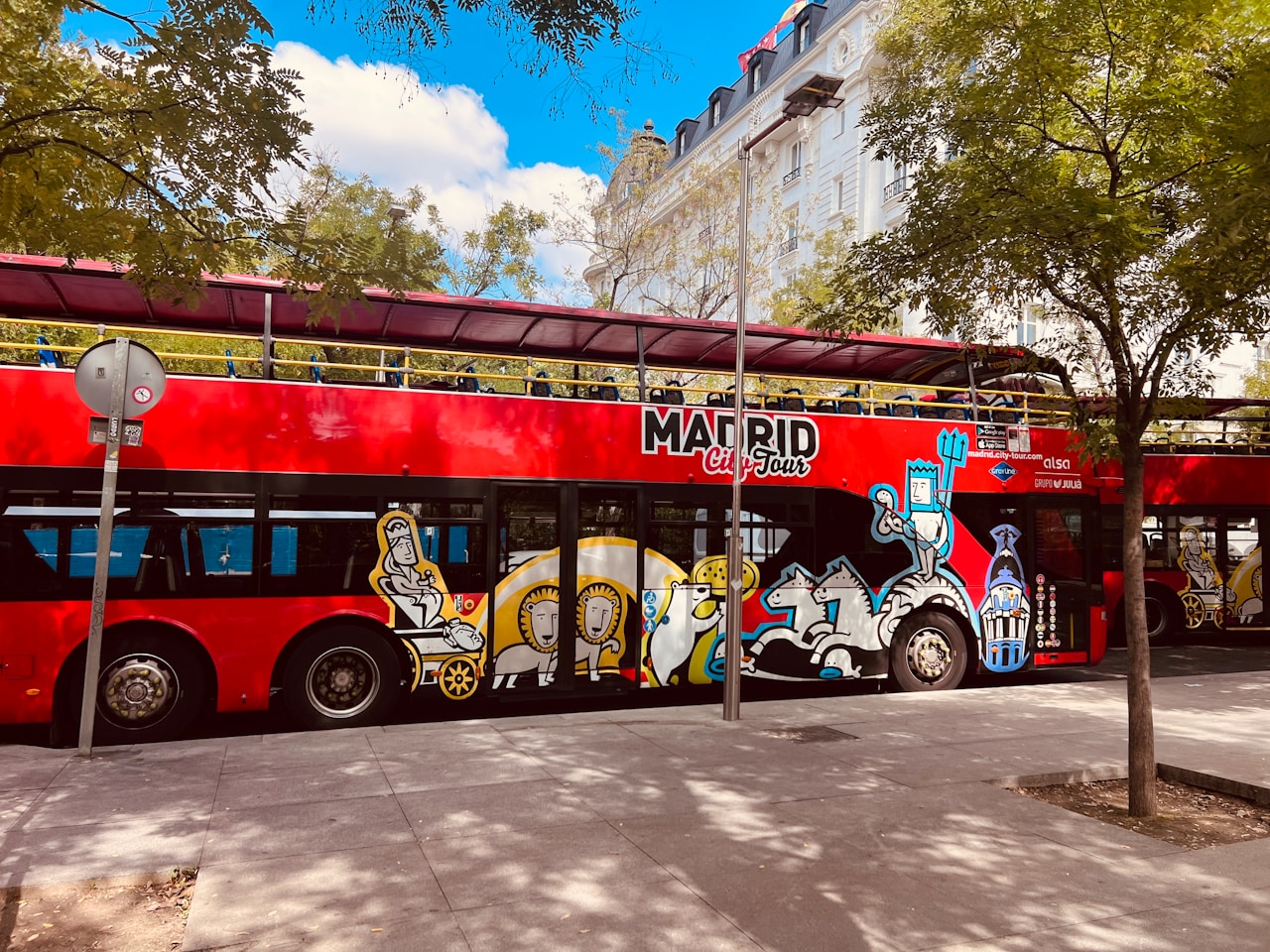
Madrid’s slick transportation system makes the journey from Adolfo Suárez Madrid-Barajas Airport to the city center remarkably straightforward.
Travelers can choose between the speedy Metro Line 8, which whisks you to Nuevos Ministerios in just 15 minutes, or the Airport Express bus that connects all terminals with Atocha train station and other central points.
For those continuing their Spanish adventure by rail, the efficient Cercanías commuter trains link the airport with Madrid’s main stations—Atocha and Chamartín—providing seamless connections to high-speed AVE trains bound for Barcelona, Seville, and beyond.
How To Get From Madrid Airport To City Center
Madrid’s Adolfo Suárez Airport connects seamlessly to the city center through several convenient options.
The Metro (subway) offers the most economical choice, with Line 8 whisking travelers from terminals T1, T2, and T4 straight into Madrid’s heart in about 30 minutes.
For those preferring door-to-door service, taxis, Uber, and airport shuttles provide hassle-free alternatives, especially valuable for travelers with heavy luggage or arriving during off-hours!
Using the Metro: Madrid Subway routes from the airport
The most efficient gateway to Madrid’s urban heartbeat begins at Terminal 2 and Terminal 4 of Adolfo Suárez Madrid-Barajas Airport, where the gleaming Metro Line 8 (pink line) stands ready to whisk travelers into the city center.
This Madrid subway option runs every 5-8 minutes, connecting to the extensive Madrid public transport network.
For just €5, freedom-seekers can zip downtown in about 30 minutes!
Taxi, rideshare, and shuttle alternatives
For travelers seeking door-to-door convenience, a fleet of transportation options awaits outside Madrid’s airport terminals.
Official taxis offer fixed rates (30€) to the city center, while Uber and Cabify provide modern alternatives for getting around Madrid.
Travelers can also book airport shuttles that connect directly to Madrid’s train stations, a perfect solution for continuing journeys beyond the capital!
Madrid Airport To Train Station Connections
Madrid’s airport offers several convenient options for connecting to the city’s main train stations, including Atocha and Chamartín.
Travelers can choose between taxis, metro lines, or the efficient Airport Express bus service, with each option presenting different trade-offs between cost and travel time.
For budget-conscious visitors, the metro provides excellent value at around €5, while those prioritizing speed might prefer a taxi (€30-35) that whisks you directly to your train connection without traversing public transport with luggage.
How To Get From Madrid Airport To Train Station easily
When arriving at Madrid’s bustling Adolfo Suárez Madrid-Barajas Airport, travelers often wonder about the most efficient way to connect to the city’s extensive rail network.
The easiest route to Madrid’s main train stations—Atocha or Chamartín—combines metro Line 8 to Nuevos Ministerios with a quick transfer to the Cercanías commuter rail.
Alternatively, the Airport Express bus connects directly to Atocha train station in just 40 minutes!
Evaluating cost, time, and convenience
How should travelers choose between the various Madrid Airport-to-train station options?
When evaluating transportation methods, consider these key factors:
- Cost-efficiency – Public transportation Madrid networks offer budget-friendly options compared to taxis.
- Time savings – The Madrid tour bus might be scenic but slower than the metro.
- Convenience level – Bus tour Madrid services stop at major attractions but may require transfers.
Exploring Madrid by Public Transportation
Madrid’s public transportation system offers visitors an efficient, affordable way to explore the city’s lively neighborhoods.
The Metro network, with its color-coded lines and intuitive maps, connects seamlessly with buses and commuter trains at major stations like Atocha and Chamartín.
Understanding ticket options – from single rides to the money-saving Tourist Travel Pass – will transform how you experience the Spanish capital’s countless attractions!
Madrid Metro Tickets and Passes
Madrid’s metro system offers several ticketing options to suit every traveler’s needs, from single-journey tickets to multi-day tourist passes that grant unlimited access to the city’s extensive public transportation network.
The Madrid Tourist Travel Pass stands out as an exceptional value for visitors, covering metro, buses, and suburban trains while eliminating the hassle of purchasing individual tickets for each journey.
Savvy travelers should note that metro cars become particularly crowded between 8-9 AM and 6-7 PM on weekdays—scheduling your explorations outside these peak hours guarantees a more comfortable ride through this magnificent city!
Single tickets, multi-day passes, and Madrid Public Transport tickets
Maneuvering Madrid’s extensive public transportation network becomes effortless once travelers understand the variety of ticket options available.
The best way to get around Madrid involves selecting the right ticket for your journey needs:
- Single tickets (€1.50-€2) for one-time rides
- Tourist Travel Pass (€8.40-€35.40) for unlimited travel
- Madrid Card combines transport with museum access
Tips for avoiding peak-hour crowds
Once equipped with the appropriate ticket, savvy travelers should focus on timing their journeys smartly to enjoy Madrid’s public transportation without the crush of commuters.
Avoid metro lines 1, 4, and 6 between 7:30-9:30 AM and 6:00-8:00 PM when locals flood the system.
Instead, consider mid-morning or early afternoon travel, when stations breathe a little easier and you’ll actually enjoy the ride!
Riding the Bus and Commuter Trains
Madrid’s extensive bus network and commuter trains (Cercanías) reach far beyond the Metro’s coverage, connecting visitors to outer neighborhoods and hidden gems without the hassle.
Maneuvering through these additional transit options might seem overwhelming at first, but Madrid’s color-coded bus routes and user-friendly mobile apps make finding schedules and ideal connections surprisingly straightforward.
For those venturing beyond the city center, these services offer not just practical transportation but also panoramic glimpses of Madrid’s diverse architectural landscape and daily life!
Public Transport In Madrid for outer neighborhoods
Exploring the outer neighborhoods of Madrid requires a broader approach to public transportation than just the metro system.
The sprawling suburbs deserve attention too!
Venturing beyond the center reveals authentic local life where fewer tourists tread.
- Cercanías trains connect distant suburbs with lightning-fast service
- Interurban buses reach picturesque towns like Alcalá de Henares
- The MetroNorte extension serves northern communities efficiently
Finding the right routes and schedules
The intricate web of Madrid’s public transportation might seem overwhelming at first glance, but maneuvering through the system becomes second nature with the right tools and knowledge.
Download the EMT Madrid app for real-time bus updates, or grab Madrid Metro’s official app to plot your perfect route.
Google Maps works wonders too, but locals swear by Moovit for its pinpoint accuracy and alternative route suggestions!
Understanding Madrid Train Stations
Madrid boasts two major train stations that serve as key transportation hubs for both city navigation and regional exploration.
Atocha, the city’s historic main station located near the Golden Triangle of Art, welcomes travelers with its stunning tropical garden and offers connections to southern destinations like Toledo and Andalusia.
Meanwhile, Chamartín in northern Madrid handles trains to destinations like Segovia and Ávila, making both stations essential knowledge for visitors planning day trips from the capital!
Madrid Main Train Station hotspots: Atocha and Chamartín
When travelers navigate Spain’s extensive rail network, two grand terminals stand as Madrid’s primary gateways: Atocha and Chamartín.
These bustling hubs offer more than just transit connections:
- Atocha’s tropical garden transforms waiting time into a mini-vacation.
- Chamartín’s ultra-modern design showcases Spain’s architectural innovation.
- Both stations feature exceptional tapas bars where locals grab quick, authentic bites.
Connections for regional travel and day trips
While Madrid captivates visitors with its lively streets and cultural treasures, the city’s train stations serve as perfect launching points for exploring beyond the capital’s boundaries.
Day-trippers can hop on trains to discover UNESCO sites and charming towns without the hassle of driving!
| Destination | Travel Time | Station | Must-See | Best For |
|---|---|---|---|---|
| Toledo | 33 min | Atocha | Cathedral | History |
| Segovia | 30 min | Chamartín | Aqueduct | Architecture |
| El Escorial | 50 min | Atocha | Monastery | Royal history |
| Aranjuez | 45 min | Atocha | Palace | Gardens |
| Ávila | 90 min | Chamartín | City Walls | Medieval charm |
Taking a Tour Bus or Sightseeing Option Around Madrid
For travelers seeking a more structured exploration of Madrid’s splendors, tour buses offer a compelling alternative to public transport with their hop-on-hop-off convenience and informative commentary.
Madrid’s official tour bus company operates two main routes that circle the city’s iconic landmarks, allowing visitors to disembark at their leisure and discover attractions at their own pace.
Beyond standard bus tours, the city boasts specialized walking, food, and art-focused excursions that reveal hidden gems and local treasures most tourists typically miss!
Madrid Tour Bus vs. Public Transport
Madrid’s Hop-On Hop-Off buses offer tourists a convenient way to see major attractions while learning about the city through audio guides available in multiple languages.
For visitors with limited time or mobility challenges, these tour buses provide a practical sightseeing solution that eliminates navigation worries and offers panoramic views from their open-top decks.
However, at €22-30 per day compared to the €8.40 tourist transport pass, these tours come at a premium price that budget-conscious travelers might find hard to justify when Madrid’s excellent public transport system reaches most attractions efficiently.
When a Hop-On Hop-Off Bus Tour might be the Best Way to Get Around Madrid
Although public transportation efficiently connects most of Madrid’s neighborhoods, the iconic red Hop-On Hop-Off buses offer visitors a unique advantage when first exploring the Spanish capital.
The tour bus shines when:
- You’re jet-lagged but keen to get oriented quickly
- You want unobstructed photos of landmarks from elevated seating
- You prefer flexibility without traversing unfamiliar metro routes
Pros and cons of a Bus Tour Madrid experience
Many travelers face a key decision when planning their Madrid itinerary: should they invest in a dedicated tour bus experience or rely on the city’s public transportation network?
Tour buses offer convenience and in-depth commentary but often cost more and follow rigid schedules.
Meanwhile, Madrid’s public transit delivers authenticity and flexibility at budget-friendly prices, though requires more navigation effort.
Your choice ultimately depends on your travel style and priorities!
Specialized Tours for Unique Exploration
Beyond standard city tours, Madrid offers spectacularly themed experiences that reveal the city from fresh angles, whether you’re gliding through illuminated landmarks on a night tour or following a specialized route focused on art, food, or history.
Small-group adventures, while typically pricier than mass tourism options, provide intimate access to hidden corners and personalized insights that large buses simply can’t match.
The savvy traveler must weigh their priorities—budget-conscious visitors might stick with public transport, while those seeking deeper cultural immersion and convenience might find specialized tours worth every euro!
Night tours, themed tours, and small-group experiences
While standard daytime bus tours offer extensive city views, Madrid’s specialized tour experiences transform into something magical after sunset and within niche themes.
For the adventurous traveler, Madrid comes alive with unique explorations:
- Illuminated night tours showcasing Madrid’s architectural gems bathed in golden light.
- Culinary-themed adventures through neighborhoods where locals feast.
- Intimate small-group experiences led by passionate Madrileños revealing hidden corners.
Balancing cost, time, and personalization
These specialized explorations offer unforgettable memories, but savvy travelers must consider the practical aspects of Madrid’s tour options.
When weighing choices, consider what matters most: budget-conscious travelers might prefer hop-on-hop-off buses, while those pressed for time benefit from private guides who customize routes.
The sweet spot?
Small-group tours that balance affordability with personalized attention, offering freedom to experience Madrid’s magic your way!
Walking and Cycling in Madrid
Madrid’s pedestrian-friendly layout invites visitors to explore its charming neighborhoods on foot, with wide sidewalks and compact districts that make walking an excellent option for tourists.
For those who prefer pedal power, the city offers BiciMAD, an extensive bike-sharing program with stations throughout central Madrid and user-friendly electric bikes perfect for traversing the urban landscape.
The best cycling routes include the scenic Madrid Río park, which follows the Manzanares River, and the expansive Casa de Campo, where tree-lined paths offer respite from the bustling city streets.
Is Madrid Walkable for Tourists?
Madrid’s historic center stands as one of Europe’s most pedestrian-friendly urban spaces, with expansive sidewalks, numerous car-free zones, and vigilant traffic enforcement ensuring visitor safety.
Tourists can effortlessly explore iconic spots like Gran Vía, Plaza Mayor, and the Royal Palace on foot, connecting Madrid’s most celebrated landmarks through picturesque streets lined with architectural gems and bustling cafés.
The city’s flat central districts invite leisurely strolls through neighborhoods like Malasaña and Chueca, where the authentic rhythm of Madrid life unfolds at every corner, offering spontaneous discoveries impossible from behind a bus window!
Pedestrian-friendly areas and safety considerations
Walking through Madrid offers one of the most delightful ways to experience the Spanish capital’s charm and character.
The city brims with pedestrian-friendly zones where cars take a backseat to wandering explorers.
- Puerta del Sol and Plaza Mayor – historic squares connected by pedestrianized streets
- Madrid Río Park – 10km riverside promenade perfect for strolling
- El Retiro Park – sprawling green oasis with wide, safe pathways
Enjoying iconic spots like Street Madrid Spain in central districts
Beyond these wonderful pedestrian zones, the central districts of Spain’s capital city offer iconic streets that showcase the true spirit of Madrid.
Gran Vía pulses with shoppers and theater-goers, while Calle de Alcalá stretches majestically from Puerta del Sol to the east.
Don’t miss Calle Huertas, where literary quotes embedded in cobblestones lead you through Madrid’s historic literary quarter!
Bike-Sharing Programs and Where to Ride
Madrid’s bike-sharing program, BiciMAD, offers an eco-friendly way to explore the city’s scenic routes, from the shaded paths of El Retiro Park to the historic streets of Madrid Río.
Safety-conscious cyclists will appreciate Madrid’s growing network of dedicated bike lanes, particularly in rejuvenated areas like the Madrid Río park, where 30 kilometers of protected paths await enthusiastic explorers.
For the most rewarding experience, grab a bike early morning to catch Casa de Campo’s natural splendor or ride at sunset along Paseo del Prado, where Madrid’s golden hour transforms the city into a photographer’s paradise!
Best routes for scenic city rides
Three spectacular routes stand out for those enthusiastic to experience Madrid’s charm on two wheels or by foot.
- Retiro Park Loop – Wind through centuries-old gardens, past the Crystal Palace and rowboat-dotted lake, offering invigorating shade on hot days.
- Río Manzanares – Follow Madrid’s revitalized riverfront path for modern bridges and sunset vistas.
- Historic Center Route – Navigate Plaza Mayor to Royal Palace, discovering hidden plazas along the way.
Safety measures and dedicated lanes
While exploring Madrid’s scenic routes can be exhilarating, safety remains paramount for cyclists and pedestrians traversing the busy capital.
Madrid has invested heavily in dedicated cycling infrastructure, with over 70km of bike lanes now crisscrossing the city.
Cyclists, grab your helmet and high-visibility gear – it’s non-negotiable for maneuvering through urban traffic safely!
| Safety Feature | Location | Benefit |
|---|---|---|
| Protected Bike Lanes | Paseo del Prado | Physical barriers from traffic |
| Bike Traffic Lights | Gran Vía | Dedicated cyclist signals |
| Reduced Speed Zones | Madrid Río | 10km/h limits for shared paths |
| Bike Parking Stations | Retiro Park | Secure storage with cameras |
| Pedestrian Crossings | Plaza Mayor area | Clearly marked bike/walk zones |
Taxis, Rideshares, and Car Rentals in Madrid
While Madrid’s public transportation excels, taxis and rideshares offer convenient alternatives when you’re rushed, traveling late at night, or hauling luggage through the city’s bustling streets.
The iconic white taxis with red diagonal stripes are ubiquitous throughout Madrid, easily hailed on the street or found at designated taxi stands near major attractions and transportation hubs.
Renting a car, however, is rarely necessary within Madrid itself—the city’s restricted traffic zones, limited parking, and one-way street systems make public transportation or taxis considerably more practical for most visitors!
When to Use a Taxi vs. Public Transportation in Madrid
Choosing between taxis and public transport in Madrid hinges on your budget, timeline, and comfort needs, with Metro trips costing as little as €1.50 while taxis start around €15 for short journeys.
Apps like FreeNow and Uber have revolutionized the rideshare scene, eliminating language barriers through in-app translations and predetermined destinations.
Rental cars, while offering flexibility for day trips to Toledo or Segovia, rarely make sense for city exploration where Madrid’s extensive public transport network shines and parking proves both scarce and expensive.
Cost comparison and convenience factors
Every traveler in Madrid faces the budget-versus-comfort dilemma when deciding between transportation options.
The city offers varied choices that balance cost against convenience:
- Taxis cost approximately €15-20 for a typical city journey, providing door-to-door service without navigation stress.
- Metro fares start at just €1.50, running frequently until 1:30 AM.
- Rideshares like Uber often split the difference in both price and convenience.
Hailing apps and language tips for tourists
For travelers traversing Madrid’s bustling streets, mastering the local transportation apps can transform an otherwise confusing experience into a seamless adventure.
Uber and Cabify operate throughout the city, while the FreeNow app connects tourists with traditional taxis.
When hailing rides, keep basic Spanish phrases handy—”¿Cuánto cuesta?” (How much?) and “Lléveme a…” (Take me to…) will earn appreciative nods from drivers.
Car Rentals and Driving in Central Madrid
Maneuvering Madrid by car presents unique challenges, including strict low-emission zones that restrict non-resident vehicles in the city center and limited, often expensive parking options.
Visitors should consider renting cars primarily for exploring Madrid’s charming suburbs and surrounding towns, where public transportation becomes less frequent.
Most rental agencies cluster around Madrid-Barajas Airport and major train stations, offering competitive rates for those who book in advance and possess an international driving permit!
Restrictions and costs associated with city driving
Madrid’s central district imposes significant restrictions on private vehicles through its stringent “Madrid Central” traffic plan.
Non-residents face hefty fines when driving in restricted zones without proper permits!
- Parking costs average €15-30 daily at public garages.
- Gasoline prices hover around 20% higher than U.S. rates.
- ZBE (Low Emission Zone) requires vehicles to display environmental stickers.
Parking rules, Madrid Suburbs access, and low-emission zones
While planning to explore Madrid by car, travelers should familiarize themselves with the city’s intricate parking regulations and zone restrictions.
The city’s low-emission zones (Madrid Central) limit vehicle access in downtown areas, requiring special permits for non-residents.
Most suburbs remain accessible without restrictions, offering free parking alternatives.
Blue zone spaces allow metered parking downtown, while green zones primarily serve residents—visitors beware of hefty fines!
Tips for Smooth Travel and Navigation When Traveling to Madrid
Madrid’s public transport system offers several convenient ticketing options that can save visitors both time and money.
Travelers can purchase single-ride tickets at metro stations, but the rechargeable Multi Card provides a more economical choice for those planning multiple journeys across the city’s integrated network.
For maximum value and skip-the-line privileges at major attractions, consider investing in the Madrid Tourist Card or Madrid Pass, which bundles transportation with museum entries and guided tours!
Buying Madrid Public Transport Tickets Made Simple
Madrid’s public transport ticket system offers multiple convenient purchase options, from automated kiosks and official ticket offices at metro stations to user-friendly online platforms.
Travelers should remember that all tickets must be validated before boarding trains or buses, a step that many first-time visitors accidentally overlook!
Understanding these straightforward purchasing methods and validation requirements guarantees visitors can navigate Madrid’s extensive transit network with the confident ease of seasoned locals.
Kiosks, online tools, and official ticket offices
Maneuvering through the ticket-buying process for Madrid’s public transportation system becomes effortless once travelers familiarize themselves with the various purchase options available throughout the city.
- Metro Kiosks – Located at every station entrance, these user-friendly machines offer multilingual interfaces and accept both cash and cards.
- Madrid MaaS App – Download this official application to purchase and store digital tickets right on your smartphone.
- Tourist Information Centers – Visit central locations where knowledgeable staff can explain ticket options while providing customized travel recommendations.
Important rules for ticket validation
Once tickets are in hand, understanding proper validation protocols becomes the key to hassle-free travel throughout Madrid’s transportation network.
All Metro and bus tickets must be validated at the yellow machines before boarding—don’t skip this step!
For contactless cards, simply tap at entry gates.
Madrid Pass or Tourist Card for Further Savings
Madrid offers several tourist cards that bundle transportation with attraction discounts, making your sightseeing budget stretch further.
The Madrid Card includes entry to over 50 museums and monuments, while the Madrid Tourist Travel Pass focuses specifically on unlimited public transport access across zones.
Travelers should map out their planned activities, calculating museum entries against card costs, to determine which pass—if any—will truly maximize their Madrid experience.
Types of passes that include transportation benefits
To save both time and money during your Madrid adventure, savvy travelers should consider purchasing one of the city’s extensive tourist passes that bundle transportation with attractions.
Madrid offers several options that’ll streamline your explorations:
- Madrid Tourist Card – includes unlimited metro rides plus discounted museum entries
- Madrid City Pass – combines airport transfers with Prado Museum access
- Paseo del Arte Card – perfect for art lovers with three major museums and public transit
Evaluating your itinerary to pick the right option
Before choosing which Madrid transportation pass to purchase, travelers should carefully assess their sightseeing priorities and planned itinerary.
Those sticking mostly to central Madrid might thrive with a simple 10-trip metrobus ticket, while ambitious explorers venturing to El Escorial or Toledo need regional options.
Match your pass to your adventures—why pay for zones you’ll never visit?
Freedom awaits with the right ticket in hand!
Wrapping Up
With over 300 million annual riders, Madrid’s transportation system ranks among Europe’s most efficient.
Whether you’re zipping beneath the city on the metro, pedaling through El Retiro Park, or hopping on a scenic bus tour, getting around Madrid is half the fun!
Remember, the Madrid Tourist Travel Pass is your golden ticket to stress-free exploration—grab one and discover the Spanish capital like a true madrileño.



